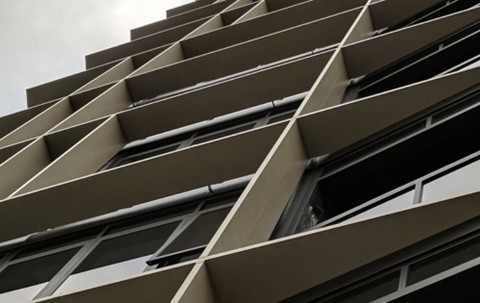For decades, the design and construction of commercial buildings have focused on a simple trade-off: transparency for natural light, or opacity for heat exclusion. In the demanding Australian climate, this has led to a heavy reliance on mechanical air conditioning to compensate for excessive solar gain through glass facades. However, a seismic shift is occurring, driven by economic necessity and a push for greater environmental stewardship. Today, architects and developers are looking not just at what a building looks like, but how it performs.
The answer lies in mastering the fundamentals of passive energy design, where the building itself acts as the primary climate control mechanism. At the forefront of this movement are intelligently deployed external shading solutions, particularly custom aluminium screens and sunhoods. These elements are no longer mere architectural flourishes; they are sophisticated, load-bearing thermal regulators that significantly reduce a building’s operational cost and carbon footprint, turning solar energy from a problem into an asset.
The Cost of Unmanaged Sunlight
In most of Australia, cooling a commercial space consumes exponentially more energy than heating it. When direct sunlight penetrates a building’s envelope, the resulting heat gain—or “heat load”—must be removed by the HVAC system. This cycle is incredibly inefficient and expensive. Furthermore, uncontrolled light penetration leads to glare, which disrupts occupant comfort and reduces productivity, forcing tenants to resort to internal blinds, which block light but do nothing to prevent the heat from entering the building in the first place.
External shading, such as a well-engineered sunhood or screen system, intercepts the sun’s energy before it reaches the glass. This simple act is the most effective way to manage a building’s thermal performance. By blocking direct solar radiation, a quality shading system can cut the cooling load by as much as 30–50%, offering a compelling and immediate return on investment (ROI) that goes far beyond initial construction costs.
Engineering the Light: The Science of External Shading
To effectively combat the sun, the shading element must be specifically designed for the building’s orientation and geographical location. This is where the custom fabrication expertise of specialists like Versatile Structures becomes indispensable. The design is a calculated balance between blockage and visibility.
- Sunhoods (Horizontal Shading): Horizontal sunhoods are crucial for regulating the high-angle sun typical during midday hours. They are most effective on northern facades (in the Southern Hemisphere) where the sun tracks high across the sky. By extending outwards, a sunhood casts a wide shadow over the windows during the hottest part of the day. Crucially, they can be designed to allow the lower-angle winter sun to penetrate, providing passive warming when it is beneficial, demonstrating the seasonal intelligence of truly passive design.
- Vertical Screens (Low-Angle Shading): Custom aluminium screens and sunhoods used vertically are essential for the eastern and western facades. The morning and afternoon sun hits the building at a sharp, low angle, easily bypassing horizontal shades. Vertical screens (often taking the form of fins or louvres) are designed to intercept this penetrating light. Their angle and spacing must be carefully calibrated to block the worst of the glare and heat while preserving external views and maximizing diffuse, usable daylight. This careful calculation ensures that a building’s thermal strategy never compromises the occupant experience.
Custom Fabrication: The Foundation of Performance
There is no one-size-fits-all solution in high-performance architecture. The effectiveness of the shading system depends entirely on its precision engineering and integration with the overall structural design. Versatile Structures has built a reputation on taking on unique architectural challenges, ensuring that every solution is tailored to the project’s specific performance requirements.
The choice of aluminium as the primary material is key. It offers an unparalleled combination of properties:
- Durability and Longevity: Aluminium is highly resistant to corrosion, making it ideal for coastal or harsh industrial environments. Properly protected and coated, these structures offer outstanding longevity with minimal maintenance, an essential consideration when choosing durable shade solutions.
- Low Thermal Mass: Unlike masonry or heavy steel, aluminium has low thermal mass. It heats up quickly and also dissipates heat quickly, preventing the screening system itself from becoming a secondary heat radiator into the building.
- Customisability: Aluminium can be precisely fabricated, extruded, and coated to meet specific architectural visions. Whether it requires complex curves, varying depths, or custom colour finishes, the material offers the flexibility needed to create architecturally distinctive and functionally flawless facades.
The process extends beyond the fabrication plant. It involves detailed analysis of the building’s microclimate, sun path diagrams, and prevailing wind conditions to ensure the structures enhance, not hinder, the building’s natural ventilation and structural integrity. This level of comprehensive service is what differentiates specialist engineering firms in the provision of commercial shade structures. For those navigating the complexities of procurement, having a comprehensive guide to evaluating shade structure quotes can be invaluable.
Architectural Excellence and Energy Credentials
In the modern commercial landscape, a building’s energy rating is a key measure of its marketability and long-term viability. Passive solar control elements directly contribute to achieving high performance benchmarks like Green Star and NABERS ratings. By reducing the reliance on mechanical systems, these structures contribute points across multiple criteria, including energy efficiency, indoor environment quality (IEQ), and material selection. The benefits are clear, extending even to public amenity projects like the Aurlands City Park shade installation.
Furthermore, a well-designed shading system has a profound impact on occupant wellbeing. By allowing controlled natural light (daylighting) while eliminating uncomfortable glare and radiant heat, the internal environment is vastly improved. Studies have repeatedly linked increased access to quality daylight and stable thermal conditions to higher levels of tenant satisfaction and productivity—a factor of growing importance in attracting and retaining top-tier commercial tenants. This focus on improving human behaviour and wellbeing is a core component of sustainable design.
Versatile Structures has demonstrated its mastery of this balance, having received recognition for award-winning shade solutions in modern architecture. Their projects prove that maximizing thermal performance and achieving striking visual aesthetics are not mutually exclusive goals—they are synergistic elements of thoughtful, contemporary design.
Conclusion
The façade of a modern Australian building is its first line of defence against a challenging climate. The integration of meticulously engineered aluminium screens and sunhoods transforms a passive architectural shell into an active, energy-saving regulator. They are essential tools for architects and developers committed to delivering buildings that are economically responsible, environmentally sound, and highly desirable to occupants.
By choosing a custom solution built with precision engineering and high-quality materials, you are making an investment in the long-term efficiency, comfort, and market value of your asset. To explore how this passive energy design strategy can be integrated into your next project, review the full range of solutions offered by Versatile Structures.

